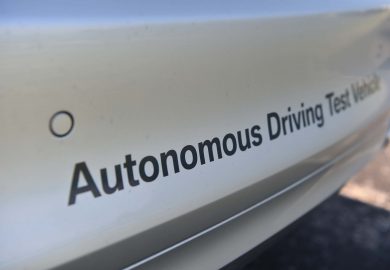On March 18, 2018, a self-driving Uber vehicle ran into a pedestrian in Tempe, Arizona. This marked the first instance of a human pedestrian being killed in a self-driving car accident, and as one might expect, the public had quite a lot to say about the tragic incident. One of the most noteworthy bits of commentary came from the CEO of Uber competitor Waymo who claimed that, given similar circumstances, a Waymo car would have been able to make better choices and prevent the fatal collision.
Did this tragedy have anything to do with the beleaguered Uber’s business practices or technology standards? Was Waymo right to make such bold claims after someone lost their life? Here are some of the key facts.
The Crash
As reported by the Washington Post, the incident took place at around 10:30 p.m. The victim, a 49-year-old woman, was pushing a bicycle across the road outside of a marked crosswalk. Uber’s autonomous car, a Volvo XC90, was occupied by a human backup driver at the time of the incident, but video surveillance footage from inside the passenger cabin showed that this individual appeared to be looking downward until just before the impact.
Video surveillance footage from one of the XC90’s external cameras also depicted the victim and her bicycle in the middle of the road in front of the self-driving car prior to the crash. Following the collision, the woman was transported to a hospital, but her injuries proved too severe to overcome.
Was this an avoidable incident? It’s unsure at this stage, but some key details include the following:
- The operator in the Uber vehicle didn’t intervene to stop the wreck.
- Neither the backup driver nor the victim seemed impaired to authorities.
- The Uber was traveling at a speed of about 40 mph.
- The police said that the Uber didn’t slow down while it was approaching the victim.
The Immediate Aftermath
In the wake of the incident, Uber put its North American self-driving car tests on ice. This impacted ongoing testing, not only in Tempe but also San Francisco, Toronto, and Pittsburgh. Arizona’s governor immediately suspended Uber’s right to test autonomous cars pending an investigation.
It also came to light that the company wouldn’t be renewing its autonomous car testing permit for California, calling into question whether any such Uber efforts would continue in the state. If it does decide to keep testing there, the California Division of Motor Vehicles may require the company to address concerns raised by the accident’s follow-up investigations before commencing.
Perhaps due to the high-profile nature of this first-of-its-kind incident, federal authorities were quick to get involved. The National Transportation Safety Board opened an inquiry and dispatched an investigatory team to Tempe. The National Highway Traffic Safety Administration also launched a local fact-finding mission.
The Waymo Commentary: Does It Have Any Basis?
As a new kind of vehicle incident, this death raised lots of questions from who should be liable to whether Uber was even more at fault since the woman and her bike made a bigger target than she would have alone. One pressing mystery on people’s minds was whether a different self-driving car might have been able to prevent the death.
At the National Automobile Dealers Association convention, Waymo’s CEO, John Krafcik, responded to just such a question. He said that his company’s technology would have been able to avoid a tragic outcome.
Where did Waymo’s confidence come from? The company noted that its testing programs included trial situations similar to the accident, such as self-driving car trials on closed courses at night. Unlike Uber, it has also shared lots of details about its testing strategies with regulators and the public.
The firm also claimed that since it uses data from public roads to create city simulations, it can run the same test thousands of times to learn how different variables play into outcomes. Notably, the company said that it stages people jumping out into the path of its autonomous cars from hidden positions, which may be similar to the way the Tempe victim emerged from a darkened area out onto the street.
The Coming Days of Self-Driving Vehicle Testing
Such an event isn’t good for anyone: Progress that comes at the expense of human life is anything but ideal. As the Waymo CEO pointed out, the accident could hurt self-driving cars as a whole, especially in the realm of public confidence.
On the other hand, there’s also a significant possibility that the negative impacts might be limited to Uber. Less than 10 days after the crash, the company that made the collision-avoidance technology used in the XC90 raised a serious accusation: Uber, it said, had disabled its collision-avoidance software. While this may have been a normal part of the company testing its own safety tools, it raises the question of whether the firm took adequate precautions.
The outcome of the investigations could prove to be yet another death knell for a company whose self-driving car dreams have been plagued by constant controversy. In the end, the autonomous car industry may be better off without the dead weight and bad publicity.
























cheap cialis generic online
cheap cialis generic online